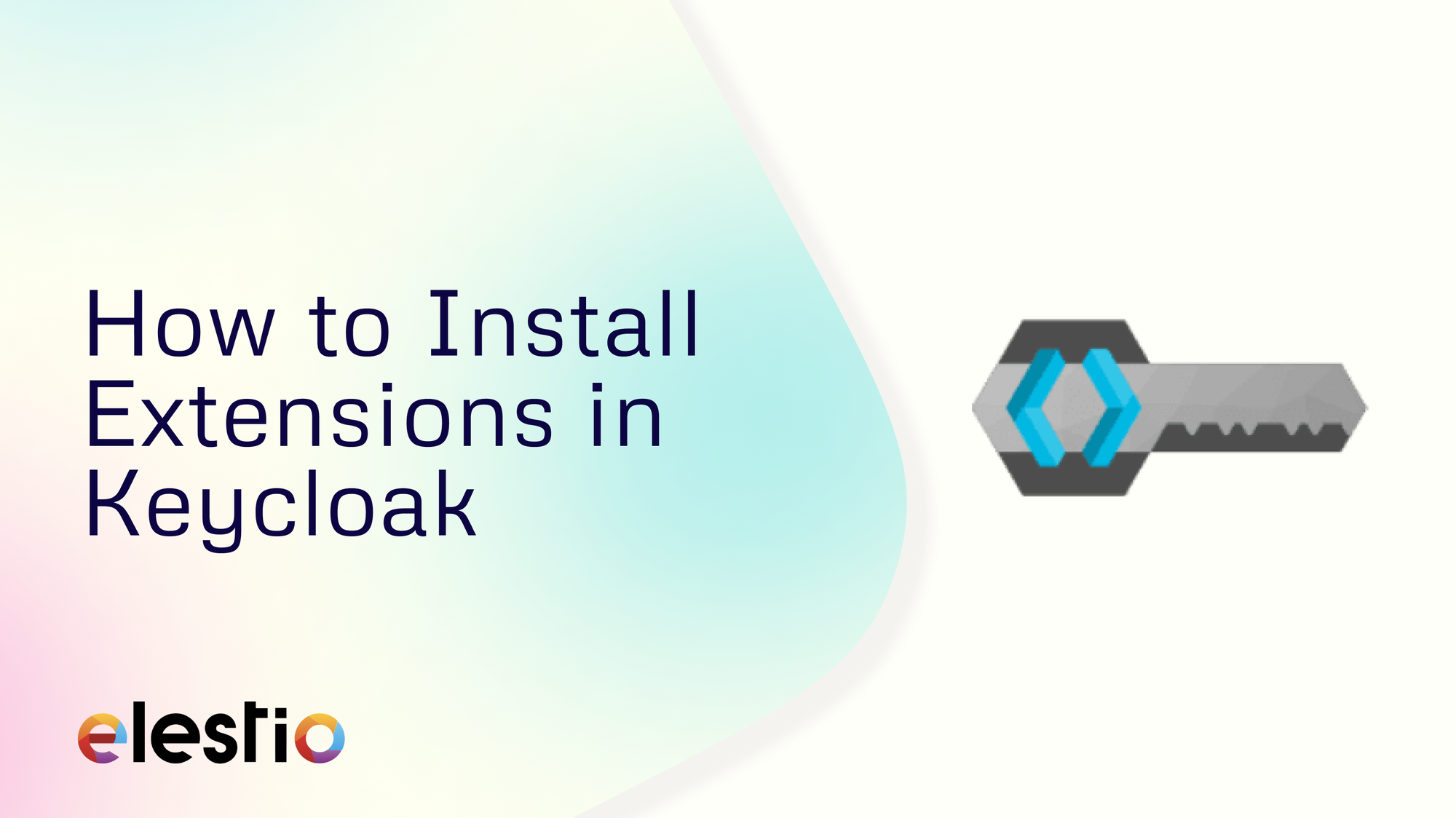How to Install Extensions in Keycloak

We will see how to install extensions in Keycloak. Before we start, ensure you have deployed Keycloak, we will be self-hosting it on Elestio. Keycloak is an open-source identity and access management solution, offering single sign-on (SSO), social login, and centralized authentication and authorization. To enhance its functionality, you can install various extensions. This guide provides a walkthrough on how to install and configure Keycloak extensions, using Keycloak authentication as an example.
Installation
To install a Keycloak extension in your application, follow these detailed steps:
- Access the Extension Management Section:
- Within your application's administrative dashboard, navigate to the extension management section. This section might be labelled as "Manage Extensions," "Extension Management," "Add-ons," or something similar.
- This area allows you to view, add, and manage the various extensions that can be integrated with your application, enhancing its capabilities.
- Find and Install the Keycloak Extension:
- In the extension management page, click the tab to view available extensions. This tab is often labelled as "Available Extensions" or "Browse Extensions."
- Use the filter or search bar to look for "Keycloak." This feature helps you quickly locate the desired extension from the potentially extensive list of available options.
- Once you find the Keycloak extension, click either “Install without restart” or “Download now and install after restart.” These options allow for flexibility based on whether you can afford to restart your application immediately.
- If required, restart your application to complete the installation process. Restarting ensures that the newly installed extension is loaded properly and is ready for configuration.
Usage
Once the Keycloak extension is installed, you need to configure it to use Keycloak for authentication. Here’s a step-by-step guide:
Create a Keycloak Client in a Realm
- Set Up the Keycloak Realm and Client:
- Log in to your Keycloak administration console with the credentials provided on the Elestio dashboard. This console is the central interface for managing all your Keycloak settings and configurations.
- Create a new realm or use an existing one. A realm in Keycloak is a space where you manage objects, including users, applications (clients), and roles. For this example, let’s call the realm
myrealm - In the
myrealmrealm, create a new client. Name the client according to your application’s purpose. For instance, if your application runs on port 8080, you might name the clientmyapp - Ensure you configure the client correctly by setting parameters such as the client protocol (typically SAML or OpenID Connect), redirect URIs, and any other required settings. Proper configuration ensures seamless communication between Keycloak and your application.
- Create Sample Users:
- Within the
myrealmrealm, create some sample users for testing purposes. This step is crucial for verifying that the Keycloak authentication integration works correctly. For instance, you could create a user namedtestuserwith a simple password. - Assign appropriate roles and permissions to these users to match the typical usage scenarios of your application.
- Within the
Copy the Keycloak Configuration File
- Obtain the Keycloak Configuration File:
- Navigate to the 'Installation' tab of your client settings in Keycloak. This tab provides various configuration options and formats for integrating Keycloak with different applications.
- Download the
keycloak.jsonfile or copy the JSON configuration data. This file contains essential information that your application needs to authenticate with Keycloak, such as realm details, client ID, and endpoints.
Configure Your Application to Use Keycloak
- Access Your Application’s Security Settings:
- In your application's global security settings page, locate the section where you configure authentication methods or security realms. This section might be found under settings like "Security," "Authentication," or "Identity Providers."
- Choose the Keycloak Authentication Extension or equivalent option for your application. This step integrates Keycloak as the identity provider for your application.
- Paste the content of the
keycloak.jsonfile or input the JSON configuration data as required. This configuration links your application with Keycloak, allowing it to handle user authentication.
Test the Keycloak Integration
- Log In to Your Application:
- Try to log in to your application. The login process should now redirect you to the Keycloak login page for authentication. This redirection confirms that your application is correctly configured to use Keycloak as its identity provider.
- Enter the credentials of the test user you created in Keycloak (e.g.,
testuser). Successful authentication demonstrates that Keycloak is handling user logins as expected.
- Successful Authentication:
- After successfully logging in via Keycloak, you should be redirected back to your application, now authenticated. This flow from your application to Keycloak and back ensures a smooth user experience and confirms that the integration is working correctly.
Installing and configuring extensions in Keycloak can significantly enhance your application's authentication capabilities. By following these steps, you can integrate Keycloak’s authentication features, providing robust security and a seamless login experience for your users. This setup ensures that your application benefits from industry-standard security practices while simplifying user management and authentication processes. Additionally, enabling Keycloak extensions allows for greater flexibility and functionality, catering to diverse application needs.
Thanks for reading ❤️
Thank you so much for reading and do check out the Elestio resources and Official Keycloak documentation to learn more about Keycloak. Click the button below to create your service on Elestio. See you in the next one👋

